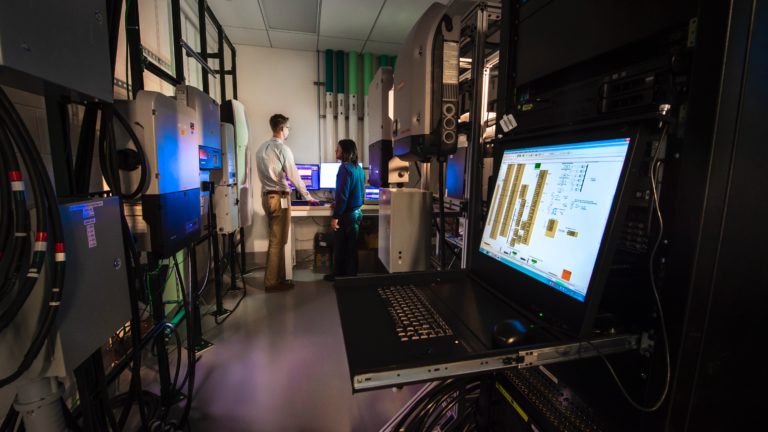The frenzy around artificial intelligence is not dying any time soon. Businesses all across the globe are adopting AI, machine learning and related technologies to increase productivity, derive better insights, and revolutionise the way businesses are conducted. While a lot of companies are claiming to be AI startups, there are only a few that are doing it right. Setting up the right AI lab with the right intentions behind it not all that easy.
Dealing with an area as critical as AI can be quite challenging. Given the fact that it is highly complex, involves high risks and can be expensive, makes it a challenging area to excel. Moreover, the AI field demands an ultra-specialised talent pool that currently stands at only 22,000 PhD-level experts worldwide, according to reports. No doubt that AI is an extremely high-risk area, but it done rightly, can offer a vast competitive advantage.
In India too, the AI startup space is gaining quite a lot of popularity, and one of the key essentials around it is to set the AI R&D lab. Right from having the right infrastructure to hardware, talent pool to conducting a proper risk analysis, there are a lot of requirements that make it up for an idea AI R&D lab.
This article takes a lowdown on some of the key requirements to set up an AI R&D lab in India.
Identify The Need To Set An AI Lab: Quite obvious as it might seem, this is the founding stone for all the efforts that you are going to be investing in setting an AI lab. As Ramasubramanian Sundararajan, Head of AI Lab at Cartesian Consulting says, a good, maybe even necessary first step in starting an AI lab is finding an AI lab-shaped hole in the organisation. Having a clear idea of why you need one is necessary. “Is it a specific problem or set of problems that you have undertaken to solve, and need a team of specialists to work on? Or is it a more general perception of market demand? Something more specific than “Everyone loves AI” would be a good start,” he told Analytics India Magazine.
In another exclusive comment by Ankur Sharma, head of analytics and user growth at Instamojo to AIM echoed the same point. He said that it is important to make sure that you are well aware of the kind of problem statements or projects you wish to deal with. AI and ML have a broad range of applications, it is, therefore, important to focus on a certain theme of applications, instead of going too generic or too broad.
Hardware And Software Requirements: With a lot of cutting-edge open source software available today, such as TensorFlow, PyTorch and more, it has become quite easy to get up and running. Having a good knowledge of Python could also be very useful as most ML algorithms have ready-to-use, beginner friendly, high-level libraries in Python.
Also, the availability of cloud computing has made it fairly easy to set up an AI or ML lab. “One can pretty much build their end-to-end AI set up in the cloud and models can be trained and hosted on cloud-based server instances, and easily deployed on applications or any other hardware and chip,” says Sharma. AWS Sagemaker, AWS Inferentia, Google Cloud ML Engine, Google Hardware Accelerator are some great applications to start a lab with on-demand pricing and without any big upfront investments. However, while commercialising a solution, it is important to understand the licensing restrictions placed by the libraries and codebases being used, warns Sundararajan.
For the hardware needs it is important to ask the question — how much will it take to train good models? A good high-end server with a GPU will suffice in most cases. He shared that cloud service providers such as AWS also have options where one can not only rent the hardware from them but also use their libraries of pre-trained models for NLP, computer vision etc. “This might be a good way to get up and running fast,” he said.
Find The Right Talent: Once the idea and infrastructure are in place, having the right talent is the most critical requirement for setting up AI R&D lab. Major companies across the globe are investing to get the right people on-board who can embrace research and adapt to the company culture. For instance, in early 2018, Facebook hired five top university professors in the US and the UK as part of an effort to strengthen its artificial intelligence research division. “Currently, the demand for data scientists is off the roof compared to the supply, which makes staffing the AI lab a big challenge,” says Sharma.
“The proliferation of open source code and models has necessitated a bit of a hacker mindset among AI practitioners, so you’ll find a lot of solutions being built very quickly. But building a robust solution that lives longer requires someone to step back and see the big picture. Make sure you have people who can do that”, shared Sundararajan. He added that it is important to hire people who are capable of critical thought.
“It is very easy to get carried away by a cool idea and end up building a shiny toy that nobody wants to play with. Have a good internship program – a two-month summer intern can sometimes allow you to test the feasibility of a long shot idea and help you prepare for the future,” he said.
Building Right Model: AI and ML are complicated areas that need a deep understanding of data domains. Even the most simple tasks might seem challenging without the right experience. However, building a complex model is a lot of fun. “There’s so much excitement surrounding this field and so much new research coming out every day that it’s a heady feeling to be part of it all. However, it is a lot of work,” said Sundararajan. It is important to think a few steps ahead to understand the kind of environment the model will finally live in. “Make sure you have an ecosystem in place to deploy good models, and people who can tell the difference between cool and useful,” he said.
Sharma shares the same thoughts. He says that one must have deep understanding of both ML algorithms as well as ML infra services.
Create The Right Environment: Creating the right environment and offering a dynamic and comfortable workspace is crucial for good research to happen. It is important to provide the right workstation with compelling datasets and interesting problems to work on. Along with supercomputers with exceptional computing power, it is important to have an easy access to advanced tools, induce the culture of collaborative thinking, design thinking and more. It is important to pursue curiosity-driven research.













































































